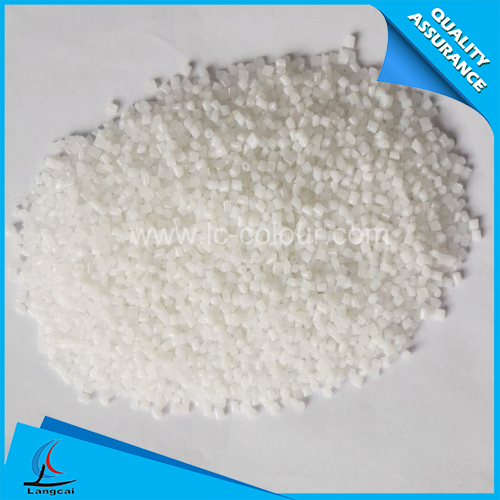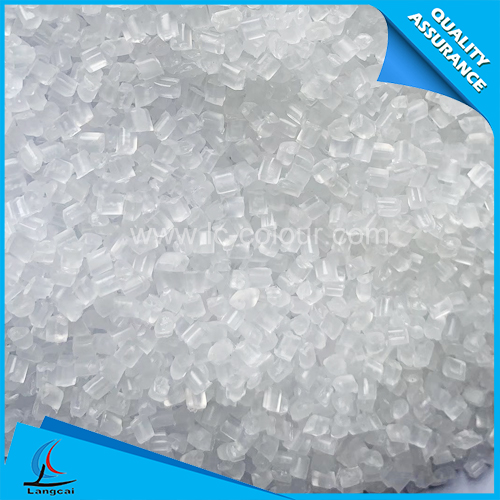- Nonwoven Fabrics
- Tailor Made Masterbatch
- Plastic Masterbatch
- Chemical Fiber Masterbatch
- Functional Masterbatch
- Machinery
- Spunbond PP Nonwoven Masterbatch
- Mono Color Masterbatch
- Liquid Color Masterbatch
- Non-woven Masterbatch
- Polyester Fiber Masterbatch
- Nylon Fiber Masterbatch
- Polypropylene Fiber Masterbatch
- Lab Nonwoven Machine
- Lab BCF Machine
- Dryer
- Filler Masterbatch
- The 2025 International Textile Innovation Conference will be held in Keqiao, Shaoxing on November 5th
- Unveiling the core components of Mono Color Masterbatches!
- Why choose Mono Color Masterbatches? The four core advantages are irreplaceable
- The adjustment of the global industrial chain has forced the upgrading of the risk prevention and control model
- What is a Complex masterbatch? What are the outstanding advantages?
- With weak US cotton and increased domestic supply, can the upward trend continue in the future?
- Phone:00836 - +86-535-8484358
- Email:wendy@ytlc-colour.com
- Address:DALAN INDUSTRIAL PARK, ZHANGXING TOWN, ZHAOYUAN CITY, SHANDONG, CHINA
According to the cotton yarn trading enterprises in Jiangsu, Zhejiang, Shandong and Guangdong, since the end of May, the import yarn outside the plate, the inner plate inquiry, the transaction and the outbound warehouse have continued to be weak and deserted, and the C32S/C26S/C21S and other high-profile bleaching yarns have been declining. JC21/JC32S/JC40S India and Vietnam yarns are basically in a state of slow sales. Only OE yarns, 16S and below ring spinning performances are “poor”. Some domestic denim factories, home textile companies, towel factories and other production and demand are relatively stable.
On the one hand, the domestic and foreign yarns in the domestic market have significantly expanded. Affected by Zheng CF1909 breaking 14000, 13000 (new low since June 2016) and export orders sharply shrinking, gauze inventory growth, the domestic yarn prices in the past half a month fell sharply, C32S package drifting from the yarn 23300-23500 yuan / ton fell to 22000-22200 yuan / ton, down 1,200 yuan / ton; currently the port clearance C32 India, Vietnam, Indonesia yarn offer overall than domestic yarn 500-800 yuan / ton;
On the other hand, concerns about the overall escalation of the Sino-US trade war have caused the consumer demand for imported cotton yarns from China's textile enterprises to fall sharply. Orders in January and August have become more and more prominent in Southeast Asian countries. Second, US buyers require Chinese manufacturers and trading companies to bear the burden and absorb the losses caused by the US government's tariff increase. The sale of “losing money at a loss”; third, some Chinese companies transfer orders to overseas subsidiaries to avoid the risk of origin.
According to the survey, the recent breach of contraction of the Baze yarn is more prominent. The shipments and deliveries in April/May are significantly lower than expected (Customs statistics, in April 2019, China imported 13,900 tons of basal yarn, only accounting for the Chinese cotton yarn in the month. The total import volume was 7.24% of the 19.20 million tons, a new low since 2016).
First of all, China and Pakistan, the "Protocol of the Government of the People's Republic of China and the Government of the Islamic Republic of Pakistan on the revision of the <Free Trade Agreement" are expected to enter into force in June. Pakistani cotton yarn can enter the Chinese market with "zero tariff", so the buyers and sellers negotiate a partial contract for the import of the yarn. After the implementation of the Protocol in June/July, the contract will not be executed but the contract will be postponed. Secondly, since May, the transaction price of the reserve and reserve cotton and the spot price of 2018/19 have fallen, and the domestic yarn has been greatly reduced. In addition, the depreciation of the RMB depreciation has caused a significant decline in the competitiveness of Baze. Some Chinese buyers have contracted or even defaulted. In addition, the quality and stability of cotton yarns due to factors such as cotton supply, lint quality and rising labor costs The previous period has declined; and some yarn mills are difficult to perform in time due to the impact of production capacity and shipping schedule.
Zhaoyuan Liangcai Plastic Chemical Fiber Factory specializes in the production of standard single masterbatch, Plastic masterbatch, complex masterbatch, chemical masterbatch, Plastic masterbatch, masterbatch, non-woven testing machine, Plastic masterbatch.
- Unveiling the core components of Mono Color Masterbatches!
- The 2025 International Textile Innovation Conference will be held in Keqiao, Shaoxing on N
- Why choose Mono Color Masterbatches? The four core advantages are irreplaceable
- The adjustment of the global industrial chain has forced the upgrading of the risk prevent
- What is a Complex masterbatch? What are the outstanding advantages?
- With weak US cotton and increased domestic supply, can the upward trend continue in the fu
- Yantai Liangcai Plastic Technology Co., Ltd. specializes in the production of Monochromati
- The predicament of Sino-US trade and exchange rate fluctuations
- Yantai Liangcai empowers the new future of fiber colors with high-quality polyester fiber
- What impact will the implementation of the Federal Reserve's interest rate cut have on the


